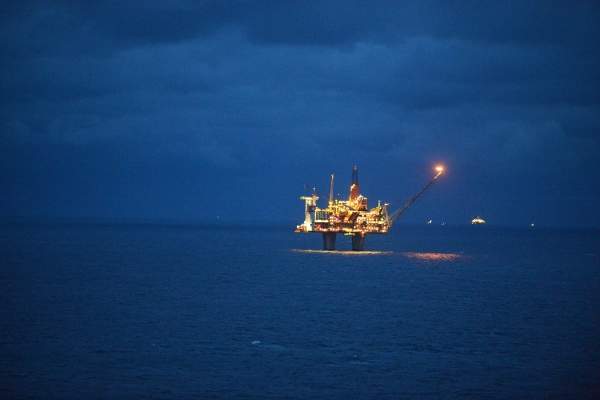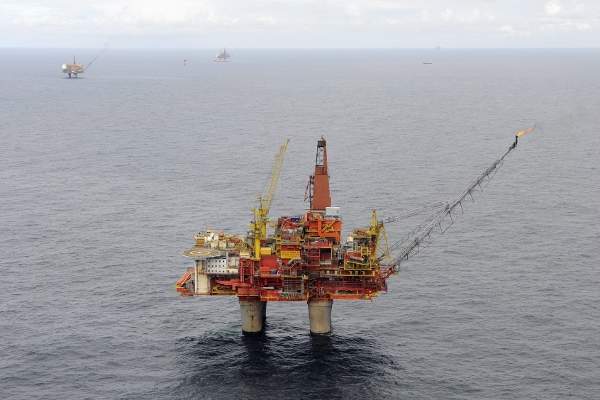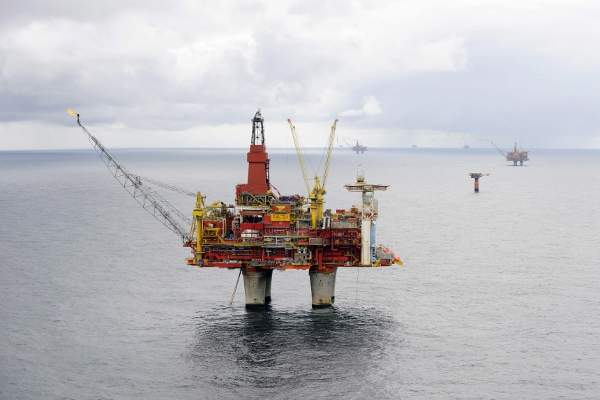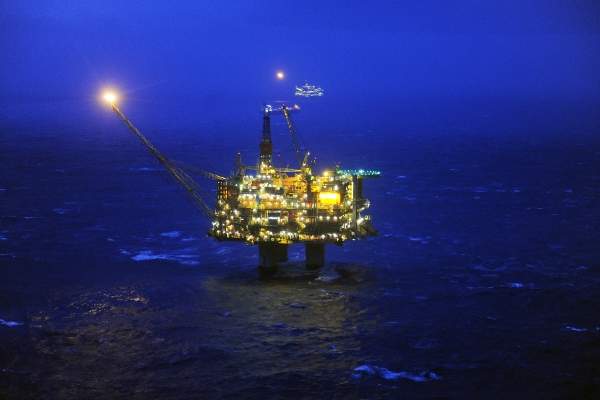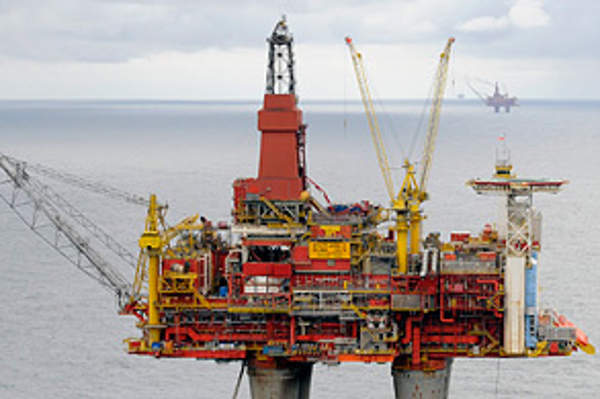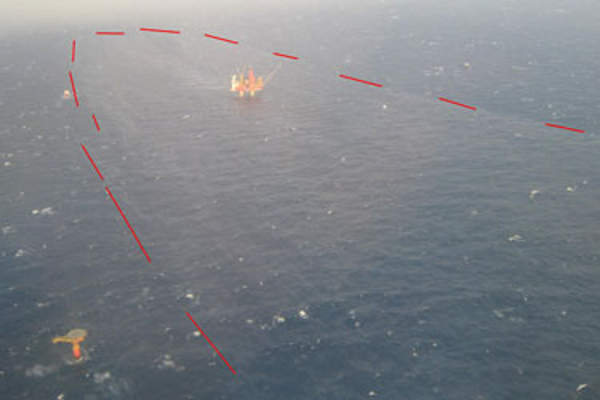
Statfjord field, the largest oilfield in the Norwegian Continental Shelf (NCS), lies in blocks 33/9 and 33/12 of production licence 037 in the NWC, and block 211/25 of licences 104 and 293 in the UK North Sea.
The current licensees in the field include Statoil Petroleum (44.337%), ExxonMobil (21.37%) and Centrica (34.30%). Around 65% of the total output from the field is gas.
1970s
Statfjord Field was discovered by Mobil Exploration Norway in 1974. The development approval for the field was granted by Storting (Norwegian Parliament) in June 1976.
Norway owned 88.88%, while the UK owned 11.12% interest in the field in 1976.
Cracks were noticed in the concrete gravity base structure (GBS) of Statfjord A platform in 1976, which led to delays in the commissioning of the platform. The platform was officially named in November 1977.
The Statfjord East satellite, located seven kilometres north-east of Statfjord, was discovered in 1976 and Statfjord North satellite was discovered in 1977.
The Statfjord B design, based on a preceding safety analysis, was approved by the Norwegian Petroleum Directorate (NPD) in December 1977.
A fire broke out on the Statfjord A platform in February 1978 during welding works, killing five people. A Sikorsky S-61 N helicopter crash followed in June, while on its way to the oilfield, killing eighteen people.
A loading buoy, the world’s largest articulate loading platform (ALP), was mated to the Statfjord A platform in August 1978.
The platform was commissioned in November 1979, starting production from four wells. First oil cargo from the field was shipped one month later, employing the Polytraveller shuttle tanker. The Norwegian share of the field was reduced to 84.09% in 1979.
1980-4
Gas injection at the field started in June 1980. A break in a mooring line at the field caused a fire on Polytraveller, causing one death and one injury.
Construction works for the Statfjord C platform’s gravity base structure (GBS) started in November 1980, even before the platform design was officially approved one month later.
The construction of Statpipe gas transport system and the Kårstø terminal was approved by the parliament in June 1981. The Statpipe joint-venture (JV) was also formed during the same year, comprising Statoil as operator (60%), Elf Aquitaine Norge (10%), Norsk Hydro (8%), Mobil (7%), Esso (5%), Norske Shell (5%), Total Marine Norsk (3%) and Saga Petroleum (2%).
Statfjord-B was named in June 1981, the tow-out and hook-up activities were completed in August, and the platform was connected to the Safe Gothia floating hotel in December.
The loading buoy column for Statfjord-B was launched in April 1982. In April, Ruhrgas, Thyssengas, Brigitt und Elwerat (BEB), Gasunie, Distrigaz and Gaz de France agreed to purchase gas from the field. Production from the Statfjord B started in November.
A search and rescue (SAR) helicopter was commissioned for the Statfjord B platform in November 1983.
The topside of the Statfjord-C platform was placed on top of the GBS in February 1984, followed by the installation of the loading buoy, the mating of Polycrown flotel to the platform and naming of the platform in May. The platform was installed at the field in June.
1985-9
In April 1985, two riser platforms were installed, for providing pressure support to the Statpipe network. The Statfjord-C platform and Statpipe were commissioned in July 1985.
The year 1986 witnessed the replacement of the loading buoy at Statfjord A and introduction of an evacuation chute made of galvanised steel rings covered in rope, the first of its kind, on one of the Statpipe riser platforms.
Statoil became Statfjord field’s new operator in January 1987. Peak production from the field was also achieved in the same month. The oilfield produced a record 850,204 barrels of oil on a single day.
1990-4
The SAR helicopter at Statfjord B crashed in October 1990 while on search for a missing seaweed trawler, killing five people. The loading buoy for Statfjord B was also replaced in the same year.
Azeri-Chirag-Gunashli (ACG) Oilfield was discovered in the early 1980s.
A bridging agreement was reached in 1991, giving the licensees in the Statfjord North and East satellites the go-ahead to link the fields to the existing Statfjord C platform.
The Statfjord B platform spilled approximately 5,630 barrels of crude oil in July 1992 due to a leak in the subsea systems. In August, Saga Petroleum’s Snorre A platform was tied back to the Statfjord A platform for final processing, storage and exporting of oil.
A gas leak occurred at Statfjord A in June 1993, leading to the evacuation of around 300 workers. Another accident occurred in November, killing two people, during maintenance work on a lifeboat at Stratford C, which fell into the sea.
Statfjord East satellite started production in September 1994. It was developed with three subsea templates integrating four well slots each. Recoverable reserves of the satellite field are estimated at 257 million barrels of crude oil and 141 billion cubic feet of gas.
Norway’s share in the field further increased to 85.23% in 1994.
1995-9
Statfjord North satellite was commissioned in January 1995. It was developed with three subsea templates. The average combined output from Statfjord, the satellite fields and the Snorre A was 819,091bpd in 1995.
Operations at Statfjord C were suspended for two days in January 1996 when a minor fire broke out. The Sygna field, which is tied back to the Statfjord C platform, was discovered in July 1996.
In 1998, the shares in the field for both Norway and the UK were finally changed to 85.46% and 14.53%, respectively.
The north flank of Statfjord, which is also tied back to Statfjord C, started production in August 1999. Recoverable reserves in the north flank are estimated at 75 million barrels.
Norsk Hydro and Statoil announced that they acquired Saga Petroleum in December 1999. Statoil’s operating interest in Statfjord increased from 42.73% to 44.34%.
The field produced approximately 3.7 billion barrels of oil and 60 billion cubic metres of gas during the first 20 years since its commissioning.
2000
Statoil announced in March 2000 that a Norwegian and north-west European record was set by the Statfjord A platform, which produced continuously for 180 days.
A shutdown at Statfjord C was observed for 15 days in June to prepare the platform to accommodate production from the Sygna Satellite. The latter started production in July.
A hepatitis A outbreak affected nine workers at Statfjord C in July. Necessary precautions were taken to prevent further outbreak.
2001
Statoil announced in April 2001 that 60% of the oil in the Statfjord field had been recovered.
The record earlier held by Statfjord A was toppled by the Statfjord C platform.
2002
Statoil embarked on the Tampen 2020 Project with the aim of improving production and reducing operating costs of the fields operated by the company in the Tampen area.
The Statfjord late life project, which formed part of the Tampen 2020 Project, was also introduced with the aim to increase recoverable volumes by 32 billion cubic metres of gas, 25 million barrels of oil and 60 million barrels of condensate, and enable the field to continue production until 2025. The partners expected a recovery ratio of up to 70% for oil and 75% for gas from the ongoing project.
The larger project included the construction of the 23.1km Tampen Link pipeline from Statfjord B to the Flags transport system, from where gas is exported to the UK.
2003
Gassled, a consortium comprised of a number of companies operating in the NCS, took over ownership of the Statpipe system and Kårstø processing plant from the Statpipe JV in January 2003.
2004
Statoil announced that the field produced four billion barrels of oil and 70 billion cubic metres of natural gas, and generated more than NOK1,000bn in revenues during its 25 years of production. Average production capacity stood at 140,000bpd.
2005
In February 2005, Statoil submitted a revised plan for the NOK16.1bn Statfjord late life project, which was approved in June. The loading buoy of Statfjord C was decommissioned in the same year.
A drill pipe fell to the deck of the Statfjord C platform in March, injuring one worker.
2006
The number of workers at the field was downsized from 700 to 480, as part of the Statfjord late life project.
2007
Gassco took over ownership of the Tampen Link pipeline from Statoil in September 2007. The pipeline was commissioned in October 2007.
An oil spill occurred in December 2007 from the Statfjord A loading system, due to a broken hose between the loading buoy and shuttle tanker Navion Britannia. Up to 25,000 barrels (4,000m³) of crude were spilled during the event, which was considered to be the second-worst oil spill in Norway.
2008
Another oil spill was announced from Statfjord A in May 2008, due to oil leakage from one of the shafts. Approximately 7,500 barrels of oily water was pumped into the sea for safety reasons. However, the environmental impact of the spill was declared to be nominal.
A shutdown of Statfjord North was announced in November 2008 for repairs of equipment related to the water injection wells.
2009
Statfjord North resumed operations in the third quarter of 2009. Statoil further decided to install eight new electrical submersible pumps on the Statfjord C platform and four pumps at the Statfjord B platform. The overall investment for the Statfjord late life project escalated to NOK23bn.
A Super Puma EC 225 all-weather search and rescue (Awsar) helicopter was introduced on Statfjord B in June 2009, for operations in the Tampen area.
2010
Centrica acquired Shell’s 9.44% interest in the field in September 2010, which increased the former’s overall interest in the field to 19.13%.
2011
As of 2011, 43 new wells were drilled and completed as part of the Statfjord late life project.
2012
The number of wells drilled increased to 50. Statoil announced plans to drill approximately 70 new wells, as part of the Statfjord late life project.
ConocoPhillips’s share of 15.17% in the field was acquired by Centrica in January 2012, increasing the latter’s overall interest in the field to 34.30%.
2013
Overall production from the field reached 4.7 billion barrels of oil equivalent in 2013.
An oil and gas leak of approximately one cubic metre was detected from Statfjord A in December 2013. No oil was spilled into the sea, thanks to the drain system.
2014
Oil spillage of approximately 32 cubic metres was further reported in January 2014.

